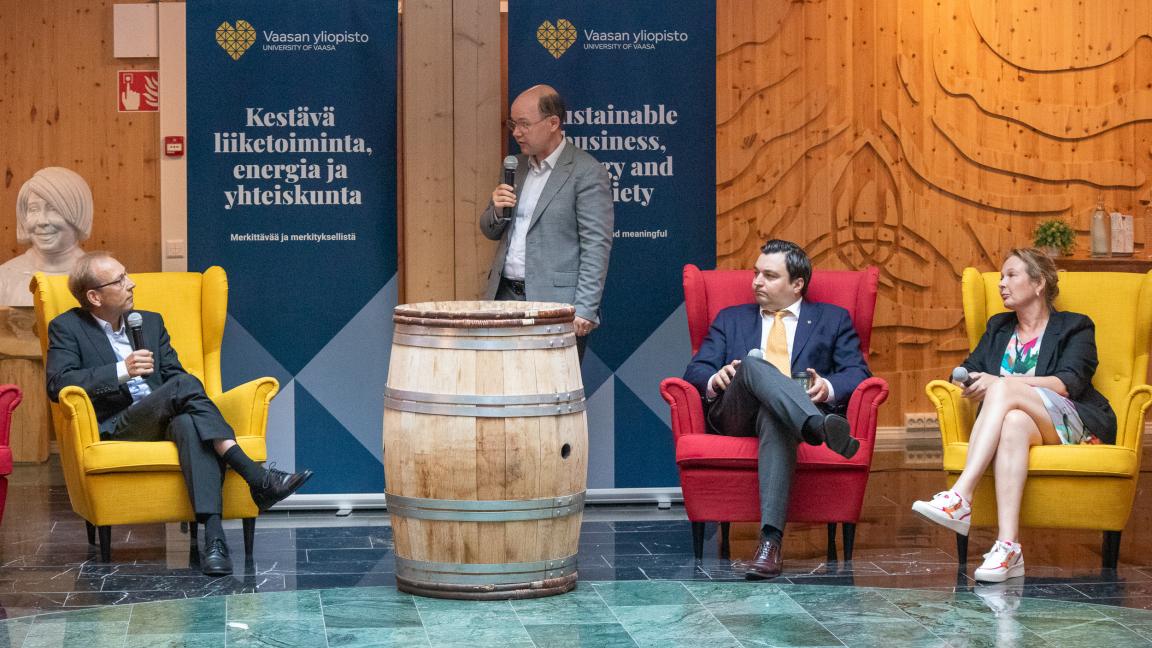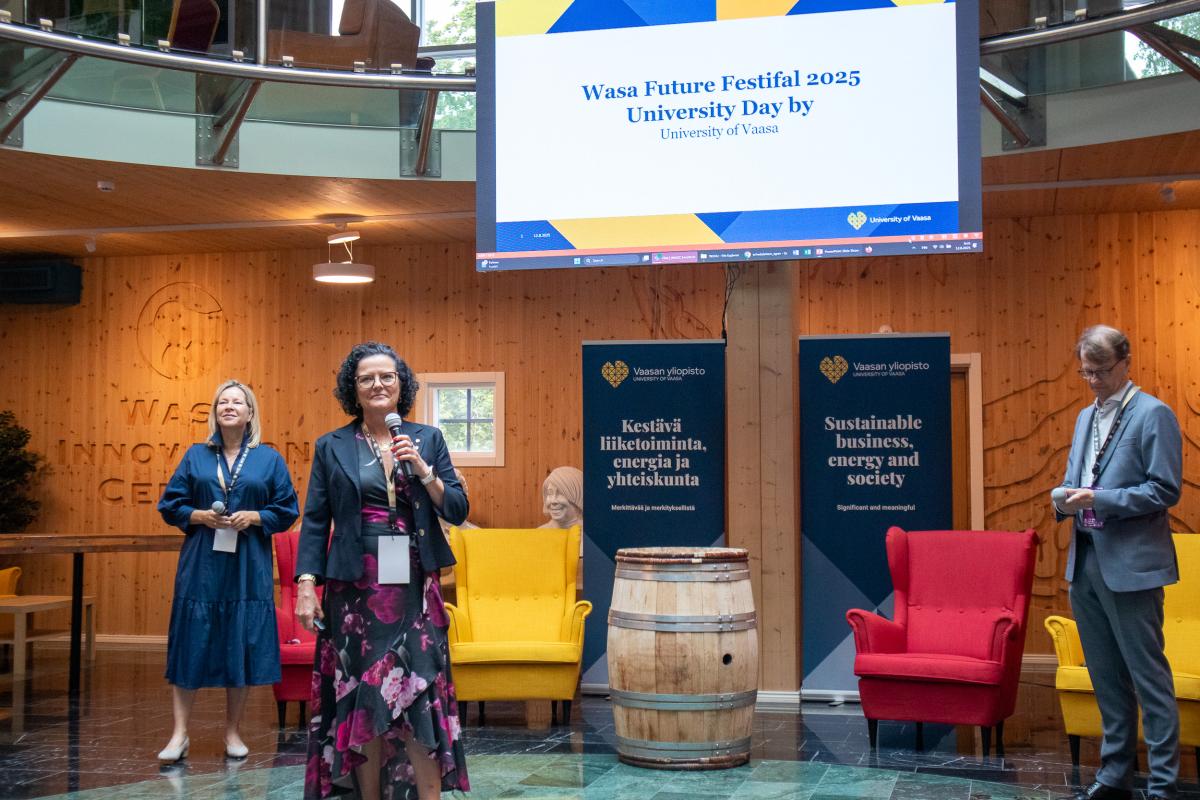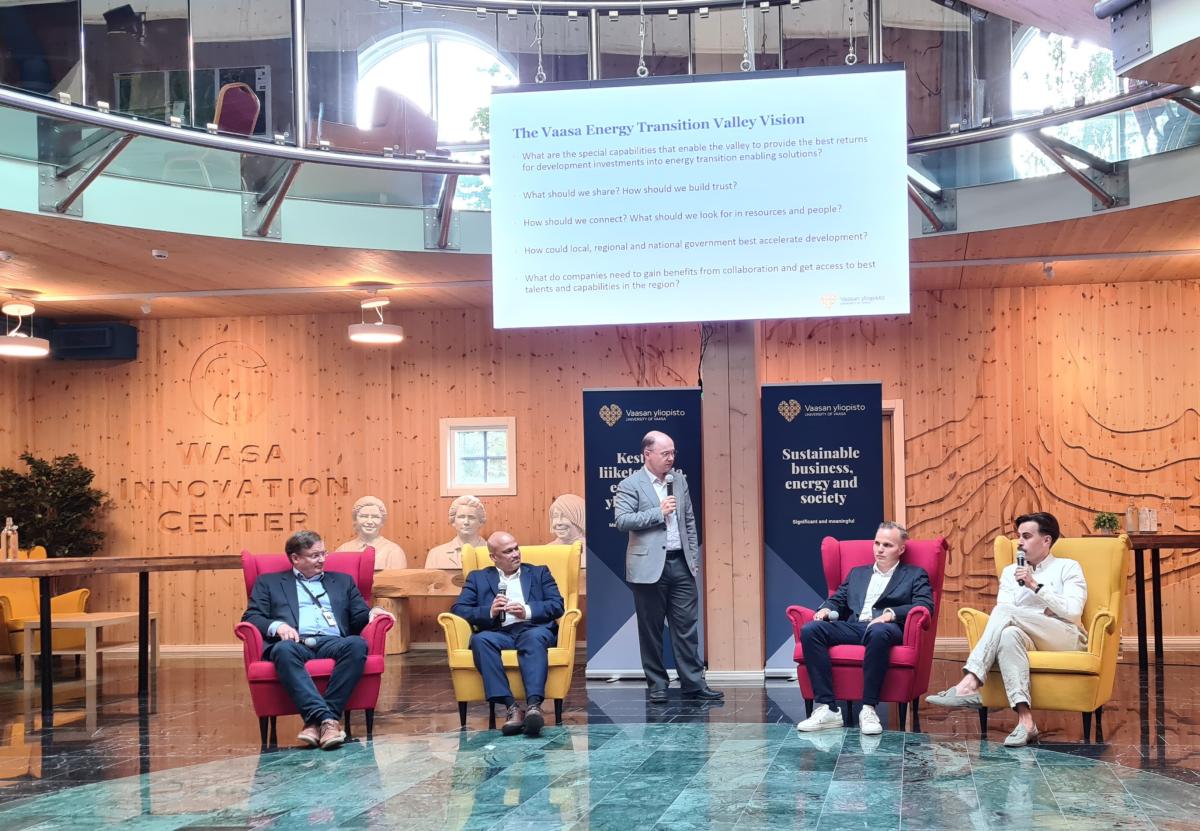The panels featured, among others, Minister for European Affairs and Ownership Steering Joakim Strand, Helena Sarén, who leads the Zero Carbon Future mission at Business Finland, Jussi Matilainen, Head of Market Data and Innovations at Fingrid, Member of Parliament Matias Mäkynen, Dean Raine Hermans from the University of Vaasa, Verne Hartikainen from Epec Oy, and Shekhar Kubal, Head of Electrification at Danfoss Drives.
Energy Transition Valley brings together expertise and infrastructure
The Energy Transition Valley initiative, jointly led by the University of Vaasa and actors in the Vaasa energy technology cluster, strengthens the research, development, and innovation activities of companies in the region. The aims include expanding significant research infrastructure and providing additional doctoral training.
– Finland has a good chance to become a role model for the green transition, a winner in innovation and investment – but it requires significantly stronger cooperation and research between universities and industry. The Energy Transition Valley is a concrete step in this direction. The Vaasa region is Europe’s most significant energy technology cluster area, so if major advances can be achieved anywhere, it is here, says Minna Martikainen, Rector of the University of Vaasa.
Partners in the Energy Transition Valley include the University of Vaasa, ABB, Wärtsilä, Vaasan Sähkö, Hitachi Energy, Danfoss, VEO, VNT Management, the City of Vaasa, VASEK, the Ostrobothnia Chamber of Commerce, and the Regional Council of Ostrobothnia.
EU funding and strategic investments driving the green transition
The first panel discussion (Leading Europe in enabling Energy Transition) explored how Finland can take a leading role in implementing the energy transition in Europe, which cooperation models can make this possible, and how EU funding instruments can be used more effectively.
Minister Joakim Strand emphasised that Finland should focus in the EU particularly on excellence and joint RDI projects between companies and higher education institutions. Not all EU funding programmes are equally profitable for Finland. He compared two examples: cohesion policy, which supports regions mainly in Eastern and Southern Europe, and the Horizon programme, which funds top-level research and innovation.
– If Finland invests one euro in cohesion programmes, 77 cents is lost along the way and the money does not return in full. But if we invest the same euro in the Horizon programme, we get on average €1.70 back. That’s why we should focus more on international top-level research and less on regional subsidies, Strand noted.
He reminded the audience that even small public investments can help steer the RDI activities of global companies to Finland and Vaasa.
– For example, the Vaasa–Umeå ferry was not just an infrastructure project, but a floating laboratory for companies, helping to bring RDI activities and production back from other parts of the world.
New electricity users challenge the grid
Jussi Matilainen, Head of Market Data and Innovations at Fingrid, noted that there is currently strong interest in connecting to Finland’s electricity grid, which increases pressure to develop it. Grid connections are not progressing, nor is the grid being built, at the pace required by demand. Consumption flexibility should be developed into a new area of innovation.
He pointed out that many new loads, such as data centres and hydrogen production, are entirely new phenomena for the electricity system. Their impacts are not yet sufficiently known, especially in fault and exceptional situations.
– We need to determine how such new electricity users behave in different situations. That requires simulations, emulations, and cooperation with equipment manufacturers, universities, and research institutes.
From Finland to a global leader in the energy transition
Helena Sarén from Business Finland underlined that Finland has excellent conditions to become a global leader in the energy transition, but commercialisation and international visibility need strengthening.
- Finland is like a hidden gem – we have expertise and solutions, but we don’t tell enough about them. We need more open collaboration between countries and companies, as well as parallel testing in different markets and environments so that companies can gain broader data and experience.
Cooperation, identifying critical points, and new innovations
The second panel enediscussion (The Vaasa Energy Transition Valley) explored how the region can accelerate the energy transition and strengthen expertise.
Dean Raine Hermans of the University of Vaasa stressed that the energy transition affects the whole of society, but because of its vast scale, it is important to define and identify the most critical parts of the value chain where real progress can be made and market entry achieved. In addition to technological innovation, he said, what is especially needed is business innovation – solutions that customers are willing to pay for.
Shekhar Kubal, Head of Electrification at Danfoss Drives, saw stronger collaboration and concrete testing environments – such as a high-power laboratory – as key tools for developing and testing solutions, simulating new grid situations, and training talent.
Verne Hartikainen from Epec highlighted that the electrification of forest machinery and other work machines is a major business opportunity, one that can also bring new innovations and reduce end-user costs.
MP Matias Mäkynen reminded that Finland already has well-functioning, business-driven resilience networks, which could be applied more broadly to innovation and RDI policy. He suggested that cooperation models between large companies and universities could be based on regional and international platforms, from which ideas and research emerge. Mäkynen also emphasised the importance of integration services and language training in attracting and retaining talent in the region.
- Read more about the Energy Transition Valley


